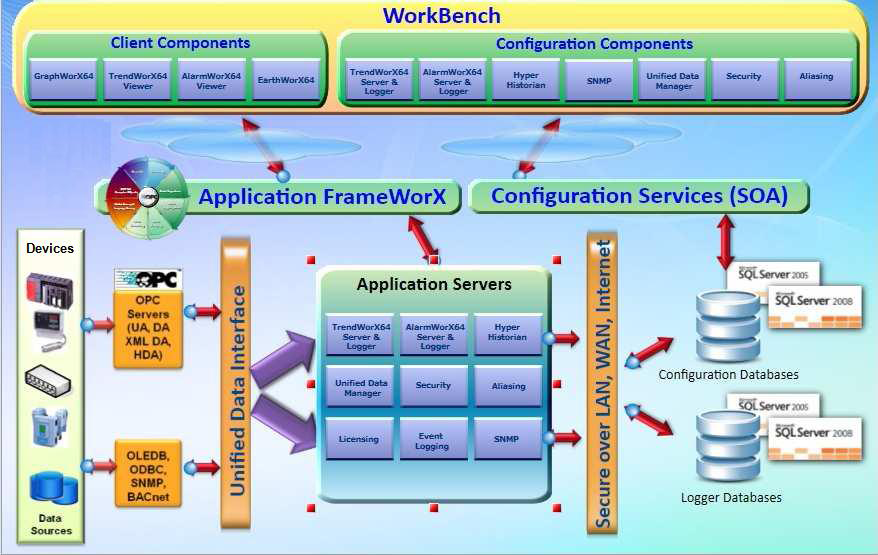|
|
The features on this page require a GENESIS64 Advanced license and are not available with GENESIS64 Basic SCADA . |
|
|
The features on this page require a GENESIS64 Advanced license and are not available with GENESIS64 Basic SCADA . |
The Workbench Classic architecture represents a three-tiered architecture. The Presentation or client layer consists of operation components such as the viewers and the Data Browser that communicate via OPC UA with the Runtime FrameWork. The Configuration Components pass Web services commands and data (usually serialized XML) to the Configuration Services which works with the various server databases to service these requests.
The middle layer, often referred to as the Application layer is helpful in abstracting the data contained in the Data Layer and providing messaging, data conversion, and transactional tools to a three tiered application.
Finally, the bottom layer or Data layer is comprised of various application servers and their associated databases. It is those servers that communicate with devices to provides the data necessary to configure components, and populate the various displays you might want to build. A good way to think about the Workbench Classic system architecture is that it is a superset of the system architectures that you have seen for the other components.
Workbench Classic Architecture

See also: